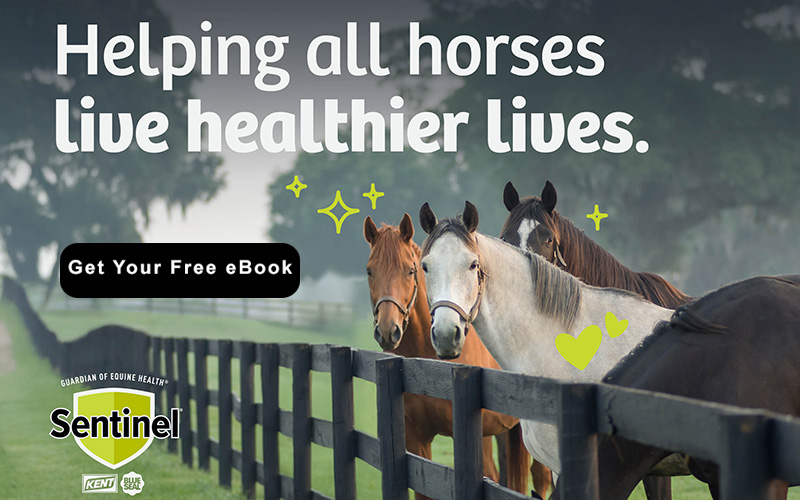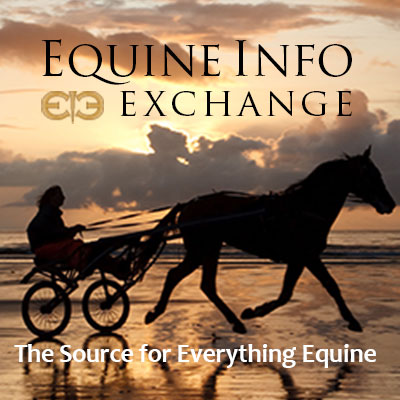Health & Education
We all want the best care possible for our horses. The Heath & Education section covers both Learning Institutions, Organizations as well as many sources for equine assistance including Veterinarians and Farriers.
For those who want a to formally study horses, the Education section includes College Riding, Equine Studies, and Veterinary Schools. Learn about the wide variety of horses in the Horse Breeds section. Supplements and Treatments Therapy are also included in the section.
Everyone can learn from Fine Art and there are some specialty Museums that might surprise you.
Horses as a therapy partner enrich the lives of the disabled. These facilities are listed in our Therapeutic Riding section. To help children and young adults build confidence and grow emotionally, please see the resources available on the Youth Outreach page.
Looking for a place to keep your horse? You can find it in the Horse Boarding section. Traveling? Find a Shipping company or Horse Sitting service if your horse is staying home!
Want to stay up to date with the latest training clinics or professional conferences? Take a look at our Calendar of Events for Health & Education for the dates and locations of upcoming events.
Do we need to add more? Please use the useful feedback link and let us know!
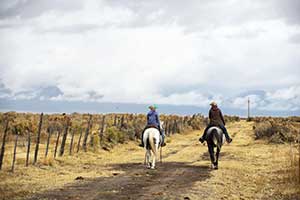
by Liz Forster
On a late autumn day in the San Luis Valley, rancher Julie Sullivan strolled through her meadow past hundreds of piles of raked hay. Her foreman Hana Fancher and apprentice Morgan Atkinson followed, engrossed in talk about the robust lower chests on their cattle, a sign of health.
Meanwhile, some 80 of the shaggy black bovines edged quietly toward the women, as if they were curious and needed a closer peek at the two-legged creatures wandering the fields.
The preoccupied women seemed to take little notice until they were suddenly encircled by their wide-eyed cattle. Some cows were bold enough to sniff a back pocket or an outstretched hand. The shy ones hung behind.
At many ranches and certainly at commercial feedlots such a scene would seem unlikely, cows congregating around their ranchers.
But at the 4,000-acre San Juan Ranch near Saguache, the lines are intentionally blurred. Here, the practice of humane animal handling requires an affinity with the animals. It is an approach and strength that Sullivan believes women are uniquely equipped to bring to ranching.
“We raise young women to be relational, to be more conscious of other people’s needs and concerns,” she said. “Young men often think they have to prove themselves and cowboy up. We don’t cowboy up around here, so we get cattle that follow us around.”
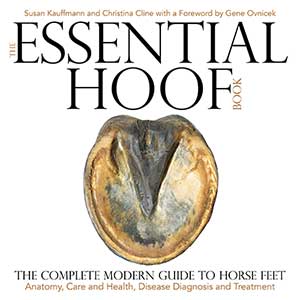
by Susan Kauffmann and Christina Cline
More and more horse owners are choosing to maintain their horses without shoes these days, for various reasons. Some are attracted by the fact that it is less expensive, others are comforted knowing they will never lose another shoe, and some feel safer with the increased surefootedness of a barefoot horse. But for most, the main reason to “go bare” is that they believe there are substantial health benefits, not just for the hooves, but for the entire horse.
Many experts agree about “going bare”…. Even Dr. Stephen O’Grady, a leading equine podiatrist who in the past was not seen as being particularly “barefoot friendly,” has actually published an article in the American Farrier’s Journal in which he states, “The equine foot with healthy structures is superior in its natural or barefoot state as opposed to the shod state with regards to accepting the weight of the horse, shock absorption and dissipating the energy of impact.”
There is still a perception among many in the horse world that barefoot only works if you don’t actually do much with your horse. Nothing could be further from the truth, as witnessed by the continually growing number of riders in disciplines ranging from endurance to eventing, from Western performance to dressage, at levels from pleasure riders to Olympic competitors, who are discovering that not only can their horses do what they do barefoot, they can do it better, and they are sounder than ever.
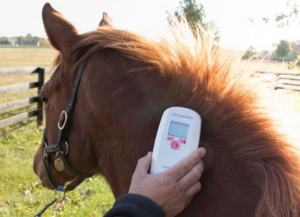
by Jen Roytz
Microchipping is quickly becoming the global industry standard for equine identification, especially those being used for competition purposes. The FEI (the International Equestrian Federation–the international governing body of equestrian sports) began integrating microchips into the registration and identification process of horses competing internationally in 2013, and countries such as Australia, Germany, France, Great Britain, Ireland and New Zealand have been using microchips in Thoroughbreds for years. This past year the U. S. Equestrian Federation and U. S. Hunter Jumper Association began requiring horses be microchipped in order to compete in sanctioned competitions beginning Dec. 1, 2018.
It was in 2017 that The Jockey Club began requiring microchipping and digital registration of Thoroughbreds in the U. S., and that crop will begin racing later this year. Following suit, the Thoroughbred Racing Protective Bureau (TRPB) announced this past December that in 2020 any Thoroughbred making its first lifetime start will require a digital tattoo in order to race as traditional lip tattoos are phased out.
The digital tattoo is a digital certification of a horse’s identity that is accessible through The Jockey Club. To receive a digital tattoo, a horse will have its microchip scanned by a TRPB technician, who will authenticate the horse’s identity through comparing the foal photos and markings on file to a visual inspection. Once the horse’s identity is confirmed, the technician will take and upload updated photos of the horse to the breed registry.
Read more: Horse Health: Microchipping a Superior Form of Identification
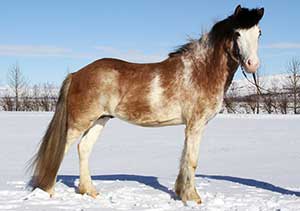
by Eygló Svala Arnarsdóttir.
The story of Ellert broke in Iceland earlier this month, when the biweekly newspaper Bændablaðið ran a story on it. The four-year stallion is currently in training and shows good promise. Its parents are the honour prize stallion Sær frá Bakkakoti, and Kengála frá Búlandi, neither of which has a white spotting pattern, and should not be able to have a foal in this colour. Thus it was clear from the get-go that Ellert was unlike other horses. Ellert’s parentage has been confirmed with genetic testing.
It has yet to be seen what Ellert’s offspring will look like, what their colour will be like. It is possible that they will have a similar pattern to Ellert, but another possibility is that their colour will be completely white. In that case, this new colour belongs to a group of colours that have been termed dominant white. Currently, dominant white is not known to exist in horses in Iceland.
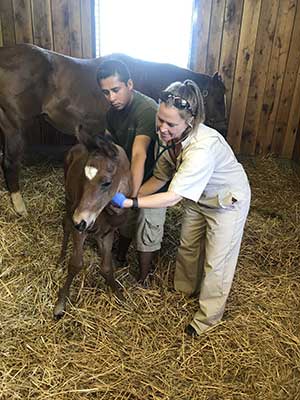
Please define Neonatal Care for Foals? Do all foals require neonatal care? What are the main cases in which neonatal care is advised?
Merriam-Webster.com defines NEONATE as : a newborn child or mammal. The “Neonatal Period” is the time when the newborn undergoes a physiological adjustment from the uterine environment to extrauterine life. In humans this is considered from birth to one month, however in the more precocious equine, we generally consider this to be the first 7 days of postnatal life.
Therefore when considering “neonatal care” we are referring to the routine preventative care and initial assessment of the newborn foal within the first 24 hours of life as well as any further follow up and treatment warranted based on physical exam and basic bloodwork.
All foals should be examined by a veterinary professional as there are many problems that begin with very subtle discrepancies that an owner may not become aware of until disease is advanced. Neonatal foals can deteriorate rapidly, so early detection and treatment is essential for the best outcome.
Neonatal care may be required sooner and be more extensive for higher risk foals such as those associated with dystocia (obstructed labor), premature placental separation (red bag), placentitis, prematurity, meconium staining (fetal diarrhea), failure of passive transfer, and those foals who have not stood and nursed by 3-4 hours of age.
Read more: Foal Q & A with Rood & Riddle’s Dr. Laurie Metcalfe

An unfortunate side effect for mares with foaling dates that occur unnaturally early in the year is longer gestations by an average of 10 days and foals born on average 10lbs lighter. Environmental light influences the development of the foal in utero and regulates when a mare will foal.
Nature intended that foals be born during the longer days of late spring and summer – and nature tends to have her way. Stimulating the longer day lengths associated with the natural breeding season by fitting pregnant mares with Equilume Light Masks or Stable Lights has been shown in clinical trials to eliminate these side effects in most mares, instead helping the mare deliver her foal on-time and with an optimum birth weight.
We recommended that Long Day light therapy be initiated for pregnant mares 90 days prior to their foaling due date for best breeding outcomes and optimum foal health.
Read more: The Equilume Light Masks Helps Pregnant Mares Foal on Time with Optimum Birth Weights

by Carolyn Charles
What makes Equine Assisted Skill Development so special? The horse of course!As horse people, we all know that these majestic creatures are some of the best teachers in the world. We have all experienced the moments, the changes and happiness they have brought to our lives. But why is it that horses are such incredible teachers and help us learn and grow?
1. Horses feel everything!
From being able to hear our hearts beat, to feeling a fly land on them, the sensitivity of the horse is essential to why they are able to teach. This is what allows horses to discern between calm and nervous energy and lets them know how their human team members are feeling. Think about what happens when you cut your finger - sometimes you can feel your heart beat in it. Your body is sending extra help to heal the situation.
Horses are so sensitive that they can sense all of the physiological changes in our bodies. Our heart rate increasing, becoming agitated, frustrated, or when we are living in the moment and being truly authentic. That’s why when horses respond, the participant can make a change in the moment and see the immediate outcome.
Read more: Working with Horses to Develop Skills - Five Reasons Why It Works!
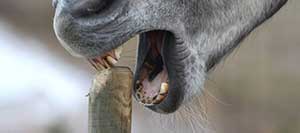
Stereotypic behaviors such as weaving, cribbing, and stall-walking occur commonly in high-performance horses as well as many companion horses. In addition to being unsightly, potentially damaging to the barn, and raising welfare concerns, stereotypic behaviors also result in important health issues such as dental disorders, temporohyoid joint damage, poor performance, weight loss, and colic.
“Cribbing is the most troublesome of these compulsive behaviors. It involves grasping a fixed object with the incisor teeth and aspirating air with an audible grunt,” explained Kathleen Crandell, Ph.D., a nutritionist for Kentucky Equine Research.
The exact reason horses crib remains unknown. Some suggest that cribbing horses have unmet dietary or management needs. Others believe that altered biological functions are the culprits, such as decreased antioxidant levels or increased oxidative stress.
Read more: Possible Link Between Selenium and Cribbing in Horses
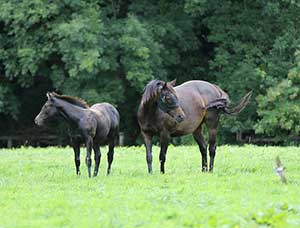
by Sarah Nash
For seasonal breeders such as the horse, the lengthening days of spring have long been associated with increased fertility, enhanced performance, improved coat condition and better health and well-being.
The duration of light exposure and the quality of the light administered are key to regulating these important physiological changes. Understanding this regulation is a fundamental factor to consider in our management of horses for breeding and performance.
The Duration of Light
The first key understanding is the duration of light exposure. Horses are long-day breeders. Their natural reproductive period coincides with the light-filled days of summer. A normal winter’s day consists of 16 hours of dark and 8 hours of light (Short Day).
A summer’s day consists of approximately 16 hours of light and 8 hours of dark (Long Day). It is the rapid transition from Short Day to Long Day that can stimulate early reproductive activity and ovulation in mares. On average, it takes 75 days from initiation of Long Day light treatment to the first ovulation of the season.
We recommended that Long Day light therapy begins no later than July 1st (SH)/ December 1st (NH) to ensure that mares are ready for breeding in time for the official start of the breeding season.
- Rider Biomechanics: Using Sensors to See How the Rider Influences the Horse (7:24)
- The Art of Seeing Lameness
- Wild Horses Can Re-balance The Ecosystem: Good For Outdoor Sports; Reduces Wildfires & Toxic Smoke
- Getting to the Point: Equine Acupuncture
- Equine Connection: International Horse Certification Course with Business Training
- Care of the Mare and Foal at Weaning
- Dental Basics: The Who, What, When, How and Why of Floating Teeth
- How Myofascial Bodywork Helps Horses
- The Effects of Routine Morning Exercise on Muscle Response
- Is the Great British Shire Horse About to Go Extinct?
- Red Light at Night Facilitates Recovery and Rest
- Breathing Easy: A Key to Equine Health and Performance
- Alfalfa and the Insulin Resistant Horse - The True Story
- Burning And Learning?
- The Canadian Horse: Discover a Versatile Breed Rich in History
- Core Equine Disease Risks Increase Amid Mosquito Season
- Equilume Stable Light Can Influence Body Composition and Biological Rhythms in Horses-in-training
- Inflammation: It’s Not Just In Joints
- Horsepower: How Digital Technology is Transforming the Equine World
- Exercising and Training Horses in Hot Weather






